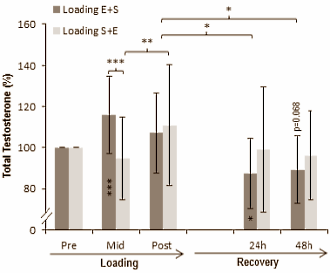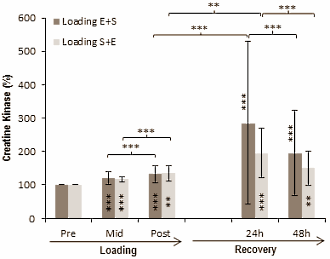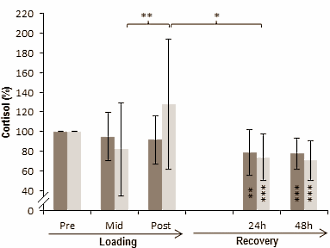|
Definition: "An ergogenic aid is any substance or phenomenon that enhances performance "
|
|
||||||||
07.02.2013 |
|
|
Recover faster: strength training first, cardio afterwards
If you combine strength training with cardio exercise, you probably start your workouts with the strength training and finish with the cardio. That usually feels best. It's good to follow your intuition, say sports scientists at the University of Jyvaskyla in Finland. They demonstrated that workouts that start with cardio and finish with strength training place a heavier load on your body so you need longer to recover.
Cardio training plus strength training
A disadvantage of combining these two forms of exercise is that it's easy to overdo the cardio training, and as a result reduce your progression when it comes to strength, muscle mass and speed. On the other hand, if you can moderate your cardio training appropriately, you can use it to speed up your recovery from the weight training.
Study
One group [S+E] trained their leg muscles first on a leg-press machine. The men did 3 explosive sets with 40 percent of the weight at which they could just manage 1 rep [1RM]. Then they did 3 sets with 90 percent of their 1RM, so training for strength. After that they did another 4 sets with 75-85 percent of their 1RM, training for muscle mass.
The men ended their training with a 30-minute cardio session. They cycled at 65 percent of their VO2max, a level at which they could just carry out a conversation.
The second group [E+S] did exactly the same, but in the opposite order. These subjects started their workout with a cardio session and finished with the weight training.
Results
In terms of the cortisol level it made no difference what order the men used for their workout; nor did it make a difference for strength recovery.
Conclusion
Source:
More:
|
|



